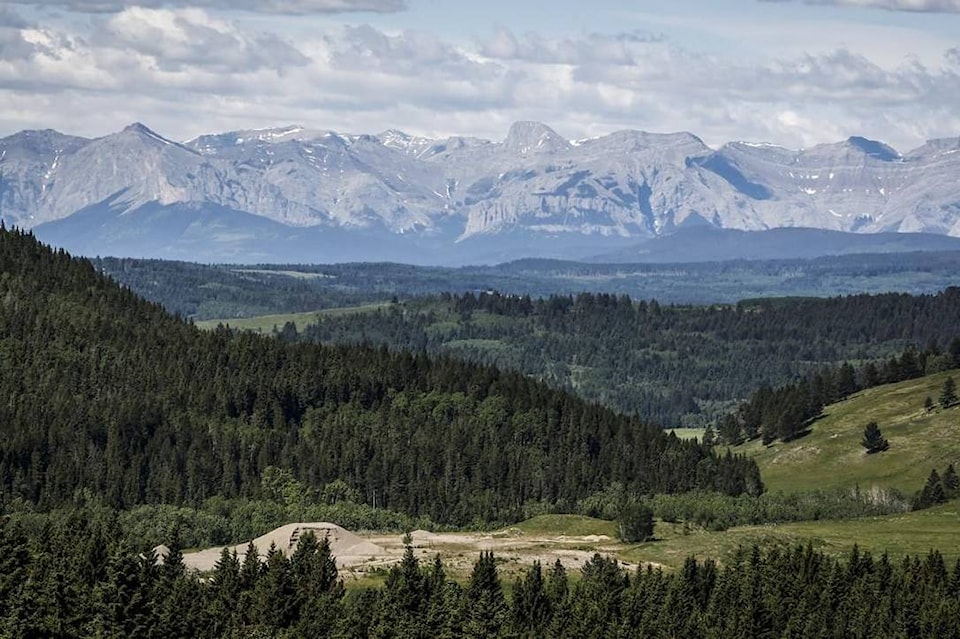A joint federal-provincial review has denied an application for an open-pit coal mine in Alberta’s Rocky Mountains, saying its impacts on the environment and Indigenous rights aren’t worth the economic benefits it would bring.
In its 680-page report released Thursday, the panel questioned the ability of Benga Mining, owned by Riversdale Resources, to control the release of selenium from its proposed Grassy Mountain mine.
“In some cases the claimed effectiveness of the proposed measures was overly optimistic and not supported by the evidence,” the report says. “As a result, we are not confident about the technical and economic feasibility of some proposed mitigation measures.
“We find that this was particularly true for effects on surface water quality, westslope cutthroat trout (and fish and fish habitat more generally), and vegetation.”
A spokesman for Riversdale Resources or Benga Mining was not immediately available for comment.
Riversdale first filed its environmental impact assessment on the mine in 2016. Public hearings on the project in southern Alberta’s Crowsnest Pass region were held last fall.
The mine, said Riversdale, would create about 500 jobs during two years of construction and 400 over its 23-year life. The company said it would pay $1.7 billion in royalties and $35 million in municipal taxes over that time.
It was supported by many in the town of Crowsnest Pass.
But concerns were raised during hearings about the chance the mine could contaminate headwaters of the Oldman River with selenium, an element commonly found in coal mines that is toxic to fish in large doses.
Riversdale argued the mine would capture up to 98 per cent of selenium release.
Probably not, said the panel. “The project as proposed is unlikely to achieve this capture efficiency.”
The panel criticized Riversdale for using optimistic assumptions and relying on unspecified “adaptive management” measures if problems arose. It said its reclamation plans were vague and pointed out that much of the land wouldn’t be available for reclamation for 25 years after the mine closed.
The review panel also concluded the mine would damage ecosystems and impair the cultural and physical heritage of local First Nations, even though most had signed agreements with the mine and didn’t object to it.
Nor was the panel convinced by the mine’s economic arguments.
“We are not able to verify the magnitude of the estimated benefits,” it said. “We find that Benga’s estimated royalty payments are likely overstated.”
The panel advises federal Environment Minister Jonathan Wilkinson to turn the mine down. It has also denied the project’s permit applications under provincial laws.
Alberta’s Environment Minister Jason Nixon and Energy Minister Sonya Savage said the panel’s conclusions prove the rigour of the province’s regulatory system.
“We are continuing the process of widespread public engagement to inform the province’s long-term approach to coal and will have more to say on water quality management in the days ahead,” they said in a joint statement.
New Democrat environment critic Marlin Schmidt said the panel’s conclusions point to the need for an overall land-use policy for the eastern slopes, one of the province’s best-loved landscapes.
“We can no longer consider these projects in isolation,” he said. “We cannot pit potential mining jobs against the existing and future jobs supported by agriculture and tourism all along the eastern slopes.”
Three groups that had long opposed the mine issued a joint press release.
“We take heart from the panel’s decision and their recognition of the significant adverse environmental consequences associated with the Grassy Mountain proposal,” said Bobbi Lambright of the Livingstone Landowners Group, a group of local ranchers and residents. “We have always seen Grassy Mountain as the litmus test for other coal development in the area.”
Katie Morrison of the Canadian Parks and Wilderness Society said, “We are happy that this decision prioritizes clean water, fish and wildlife species at risk.”
Latasha Calf Robe of the Niitsitapi Water Protectors added: “Projects that will have adverse effects on Niitsitapi ways of life, culture and rights should not proceed and we are grateful that the panel acknowledged the severe impacts a project such as this would have.”
The mine is the first of a number of coal projects proposed for the mountains and foothills of Alberta’s western boundary. At least eight companies have taken large exploration leases.
The exploration rush took off last spring after the United Conservative government revoked a decades-old policy that protected the area against open-pit coal mines. It sparked public outrage from First Nations, municipalities and thousands of Albertans.
In response, the province restored the policy, paused the sale of new leases and suspended permits for exploration work on the most sensitive landscapes. Work in less sensitive areas continues.
Earlier this week, Wilkinson announced that any proposals from those exploration leases would be subject to a federal environmental review. He said concerns about selenium prompted the move.
—Bob Weber, The Canadian Press
RELATED: ‘Unacceptable environmental effects:’ New federal policy restricts thermal coal
